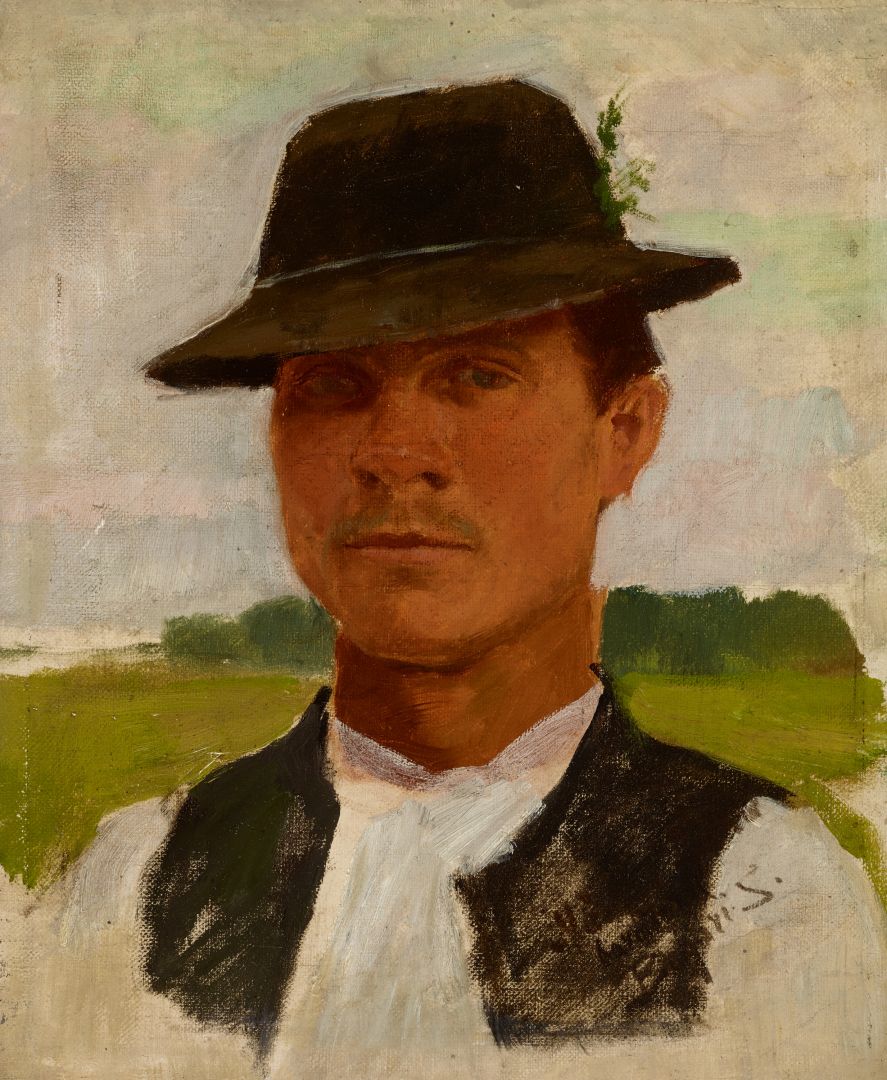Hall 2 - 5. view
A Peasant's Head
BIHARI, SÁNDOR (1855–1906)
A Peasant’s Head, after 1890
oil on canvas, 25x20 cm; marking at the bottom right: Bihari S.
Fine Arts Collection, Inv. No.: 74.553.
The ideal of national art and efforts to make that a reality permeated throughout the entirety of 19th century painting in Hungary, or at the very least had a significant influence on what was considered mainstream. In the latter half of the century, Szolnok and its vicinity represented one of the major centres for folk genre and landscape painting. Even though an art colony was founded there in 1902, major activity in the area can be traced back as early as the beginning of the 1850s. Sándor Bihari, a popular Hungarian realist genre painting artist worked here regularly for long periods of time, starting between the summer of 1885 and the fall of 1886. He was invited there by his friend and fellow painter Lajos Deák-Ébner, who had been visiting Szolnok to paint since 1874, after they met in Paris. Bihari became famous with his large scale, carefully arranged compositions, which usually depicted natural and creative scenes from folk life, with such as Trying on the Tophat and In front of the Magistrate. Belonging to the same generation, Munkácsy can be considered to be his primary role model in terms of art. However, it is also worth noting that, similar to Deák-Ébner, the colour palette of Bihari also became much lighter than his master’s after his visit to Paris in the early 1880s. Later on plein air painting, which is characterized by seeking out mood and atmosphere, became a more and more significant facet of his oeuvre, which can be observed through the use of themes and motifs associated with the Szolnok and the Great Hungarian Plain regions.
The portrait in the museum collection titled A Peasant’s Head bears all the characteristics of Bihari’s painting. The low horizon landscape in the background of the head study is clearly evocative of the Great Hungarian Plain, which was a major element of national identity in the 19th century. The clothing of the model, which consists of a white shirt and a black vest was a common attire among the peasantry. The visage of the young man is full of life, and he looks at the viewer with a sense of directness under his short-brimmed hat which is decorated with a tender shoot of green, to further emphasize his youthfulness. Even though the theme of the painting is simple, its fine execution is example of Bihari’s talents as a portrait painter. The painting was likely intended to be a gift originally, as traces of an illegible dedication can be seen next to the painter’s signature.
Ákos Barkóczi
